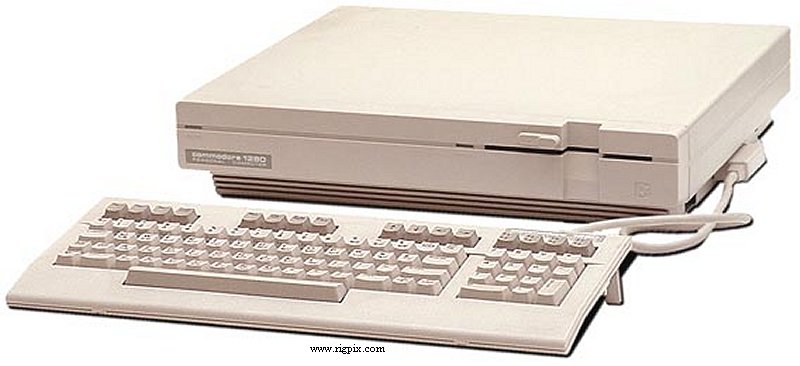| Type: | 8-bit home computer |
| CPU: | MOS 8502 @ 1-2 MHz & Zilog Z80A @ 4 MHz |
| Operating system: | Commodore Basic 7.0 & CP/M 3.0 |
| Memory: | ROM: 72 KB
RAM: 128 KB (2*64 KB banks). Expandable to 512 KB |
| Sound: | "SID" - MOS 8580
3 voices, multimode filter, 3 ring modulators. Stereo |
| Graphics: | "VIC-II" - MOS 8564 (NTSC) / 8566 (PAL)
Text: 40*25 characters
320*200 pixels
160*200 pixels
16 colors. Sprites
"VDC" - MOS 8568 (RGBI)
Text: 80*25 or 80*50 characters
640*200 pixels
640*400 pixels
320*200 pixels
16 colors. Blitter |
| Storage: | Tape recorder
Integrated 5.25" floppy, 340 KB (a modified 1571D) |
| Input: | External keyboard
Optional mouse |
| Connectivity: | Cartridge slot
RF out
Video/audio out
80 column RGBI output
Floppy/printer port
Tape recorder I/O
TTL-RS232
User port
2*game ports |
| Voltage: | Mains |
| Power consumption: | |
| Dimensions (W*H*D): | ? mm (?") |
| Weight: | ? Kg (? lbs) |
| Manufactured: | 1987-1989 (Discontinued) |
| Other: |
Commodore's last commercial 8-bit machine, which was able to run in three
different modes: C128 mode, C64 mode and CP/M mode.
This second version of 128D was housed in a metal case and was released in both
Europe and USA, complying with the FCC regulations for RF emissions. It featured
an optimized motherboard with a new VDC chip with more video RAM, and some bugfixes.
The carrying handle and internal fan were also removed in this so called "cost reduced"
version, hence the inofficial DCR suffix.
|
| Related documents: |
AEA Doctor DX (DDX-64): User manual (113 KB, in swedish)
|
| Modifications: | |
| Notable "ham" software: |
C64 mode: Digicom 64 - Packet TNC software for simple modem
C64 mode: Doctor DX - CQWW CW contest simulator (By AEA)
C64 mode: Doctor QSO - CW ragchew simulator (By AEA)
C64 mode: MBA-TOR - ASCII/CW/RTTY/AMTOR software (By AEA)
|
| Original options/accessories: |
1084S
1570
1571
1581 |
Color monitor, 14"
5.25" floppy, single sided
5.25" floppy, double sided
3.5" floppy |
|








